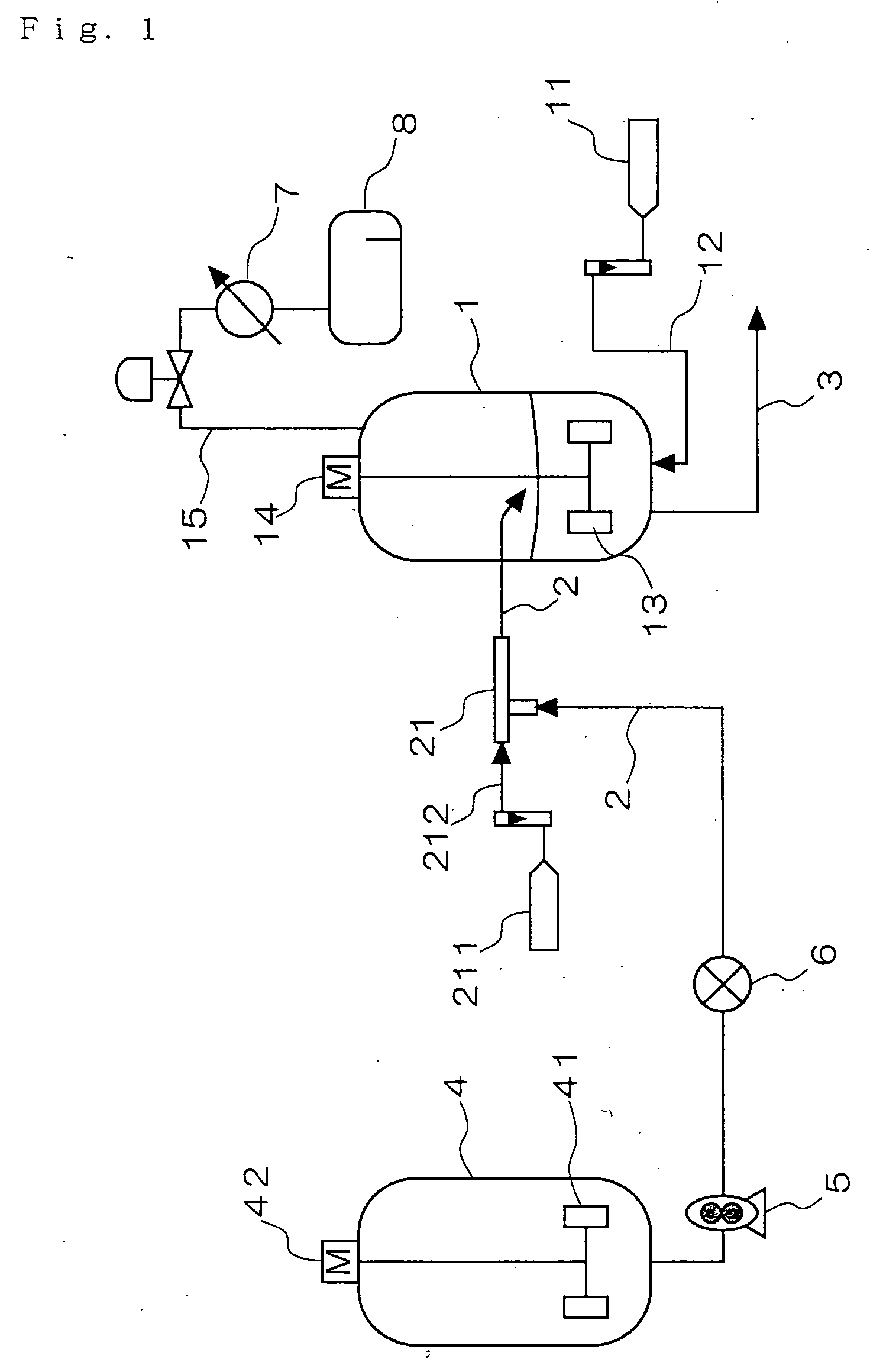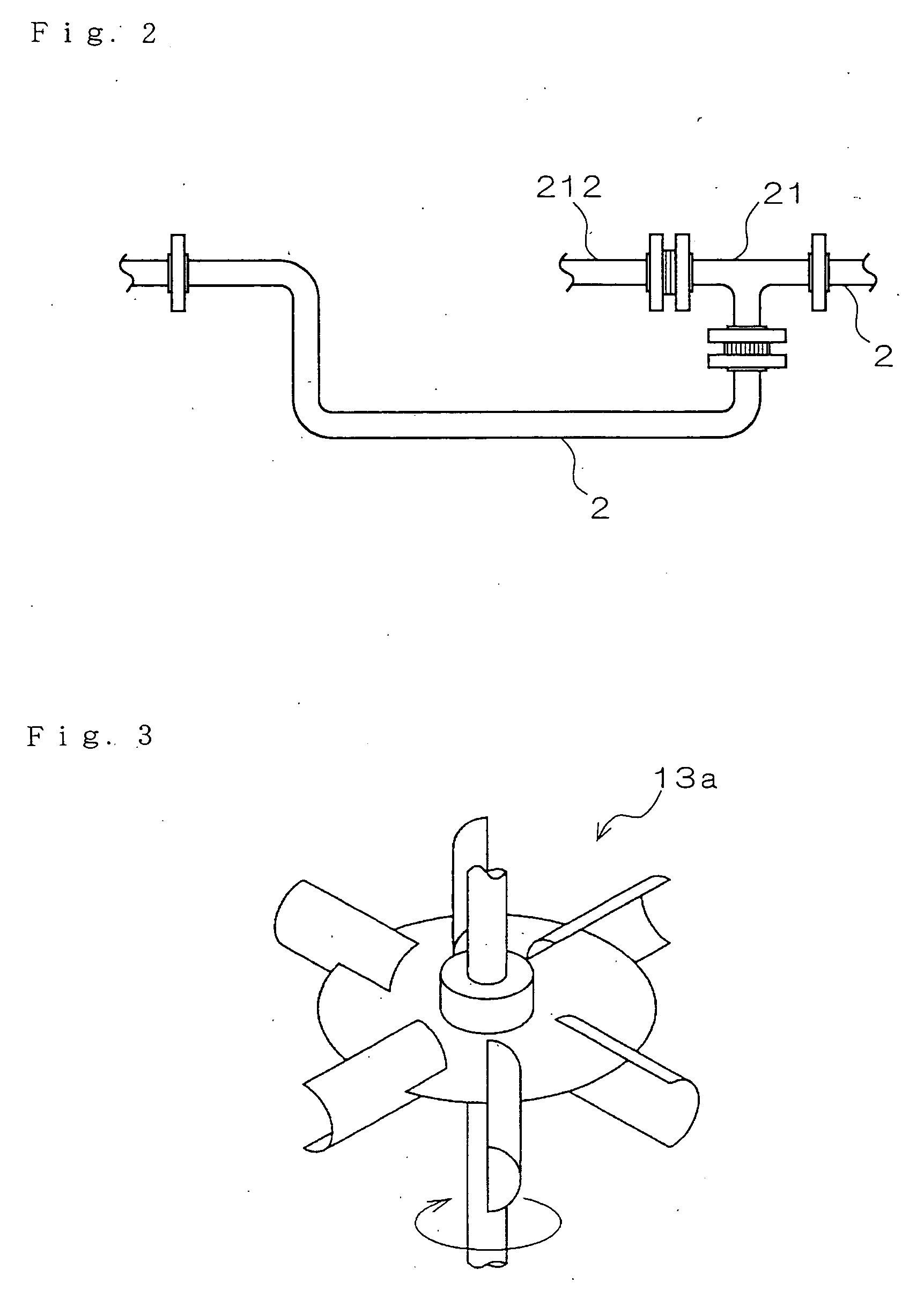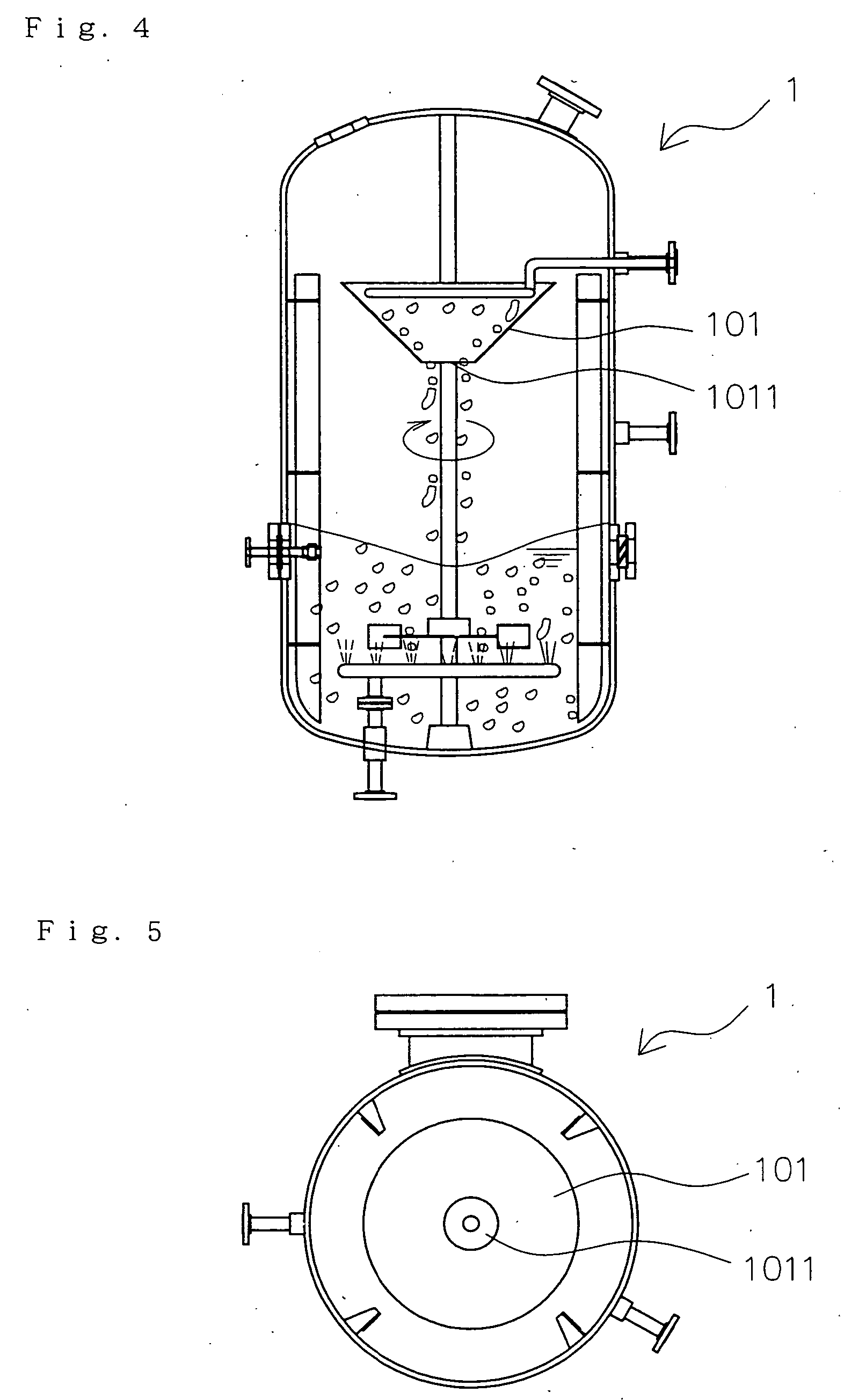Method of removing solvent from polymer solution and solvent removing apparatus
a technology of solvent removal and polymer solution, which is applied in the direction of chemistry apparatus and processes, separation processes, evaporation, etc., can solve the problems of difficult solvent removal and inability to efficiently remove solvent, and achieve the effect of efficient removal of solvent from polymer solution, reduced concentration of residual solvent, and efficient removal of solven
- Summary
- Abstract
- Description
- Claims
- Application Information
AI Technical Summary
Benefits of technology
Problems solved by technology
Method used
Image
Examples
experimental example 1
Examples 1 through 4 and Comparative Examples 1 and 2
[0146] Using a mixture solvent of 90% by mass of cyclohexane and 10% by mass of n-heptane as a reaction solvent, a polymer solution (at temperature of 60° C.) containing styrene butadiene copolymer (styrene content; 10% by mass) at 20% by mass, as obtained by copolymerizing styrene and butadiene together using n-butyl lithium as a polymerization initiator was treated for solvent removal with the apparatus shown in FIG. 1. Specifically, transferring the styrene.butadiene copolymer solution in polymer tank 4 (made of stainless steel; inner volume of 3 m3) under agitation with pump 5 (plunger pump) through tube 2 for transferring polymer solution, the copolymer solution was fed at a speed of 130 liters / hour to line mixer 21 as a gas-liquid mixer arranged inside the tube 2 for transferring polymer solution. Simultaneously feeding steam [pressure (gauge pressure) of 1.2 MPa and temperature of 220° C. (the same pressure and temperature...
experimental example 2
Examples 5 and 6 and Comparative Examples 3 and 4
[0149] Solvent was removed in the same manner as in the Experimental Example 1, except that the total of the amount of steam to be fed to the gas-liquid mixer and the amount of stem to be fed to the tank for removing solvent was 150 parts by mass when the solvent contained in polymer solution was defined as 100 parts by mass and the individual amounts to be fed were changed as shown in Table 1.
experimental example 3
Examples 7 through 9 and Comparative Examples 5 and 6
[0150] Solvent removal was done in the same manner as in Experimental Example 1, except for the use of a mixture solvent of 90% by mass of cyclohexane and 10% by mass of n-heptane as a reaction solvent and a polymer solution (at temperature of 60° C.) containing styrene.butadiene rubber (styrene content; 35% by mass) at 15% by mass, as obtained by copolymerizing styrene and butadiene together using n-butyl lithium as a polymerization initiator and except that the total of the amounts of steam feed to the gas-liquid mixer and to the tank for removing solvent was 70 parts by mass when the solvent contained in the polymer solution was defined as 100 parts by mass and the amounts thereof individually fed thereto were changed as shown in Table 1.
[0151] In these Experimental Examples 1 through 3, the term concentration of the residual solvent in the polymer after solvent removal means the concentration of the solvent in the dried poly...
PUM
| Property | Measurement | Unit |
|---|---|---|
| boiling point | aaaaa | aaaaa |
| pressure | aaaaa | aaaaa |
| temperature | aaaaa | aaaaa |
Abstract
Description
Claims
Application Information
 Login to View More
Login to View More - R&D
- Intellectual Property
- Life Sciences
- Materials
- Tech Scout
- Unparalleled Data Quality
- Higher Quality Content
- 60% Fewer Hallucinations
Browse by: Latest US Patents, China's latest patents, Technical Efficacy Thesaurus, Application Domain, Technology Topic, Popular Technical Reports.
© 2025 PatSnap. All rights reserved.Legal|Privacy policy|Modern Slavery Act Transparency Statement|Sitemap|About US| Contact US: help@patsnap.com



